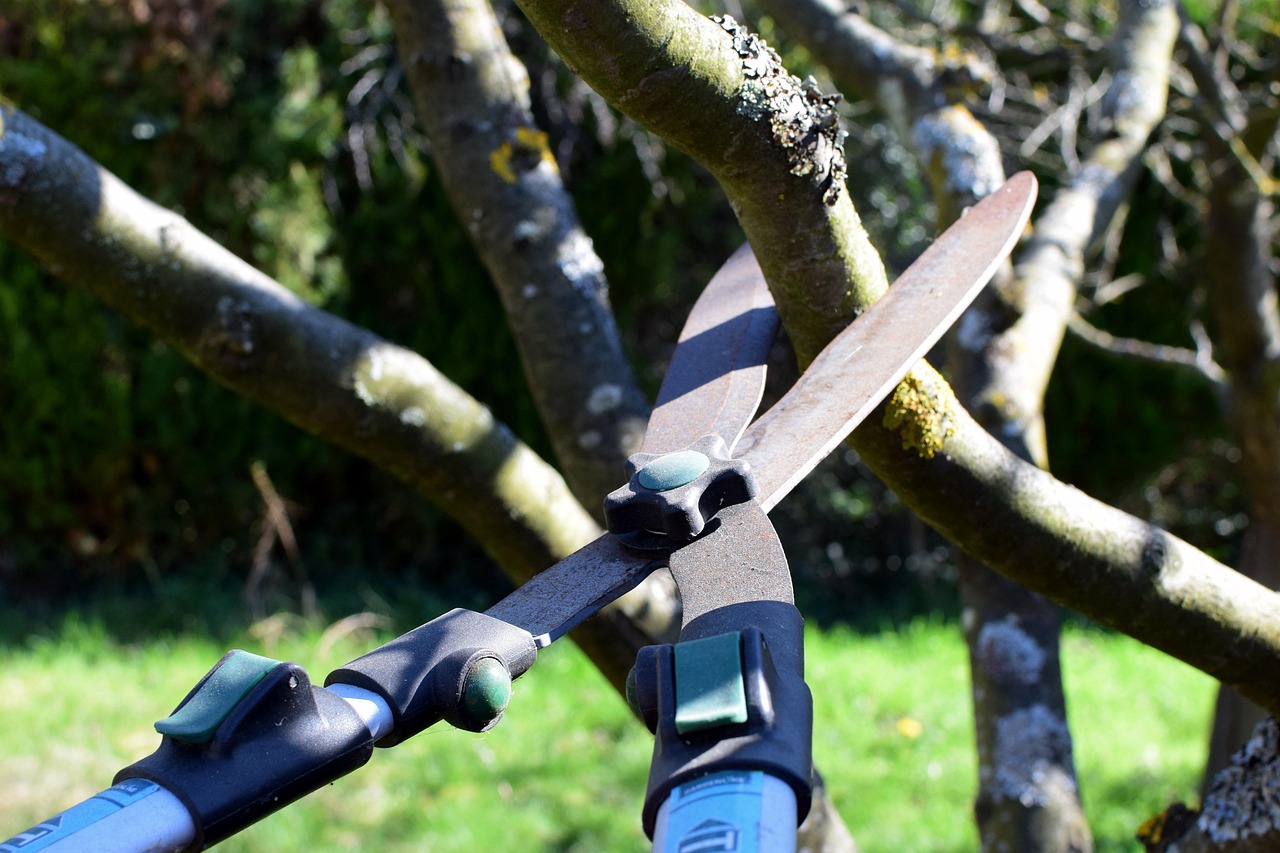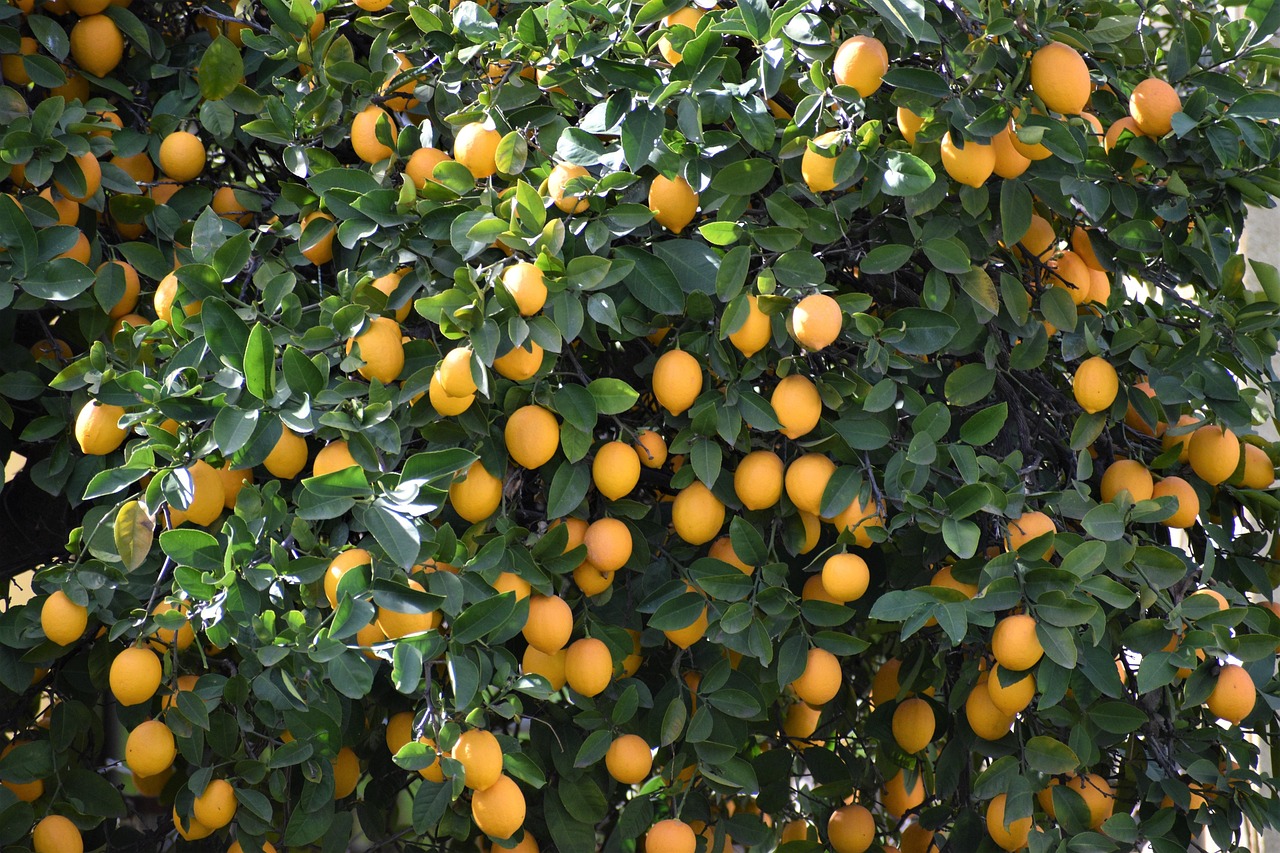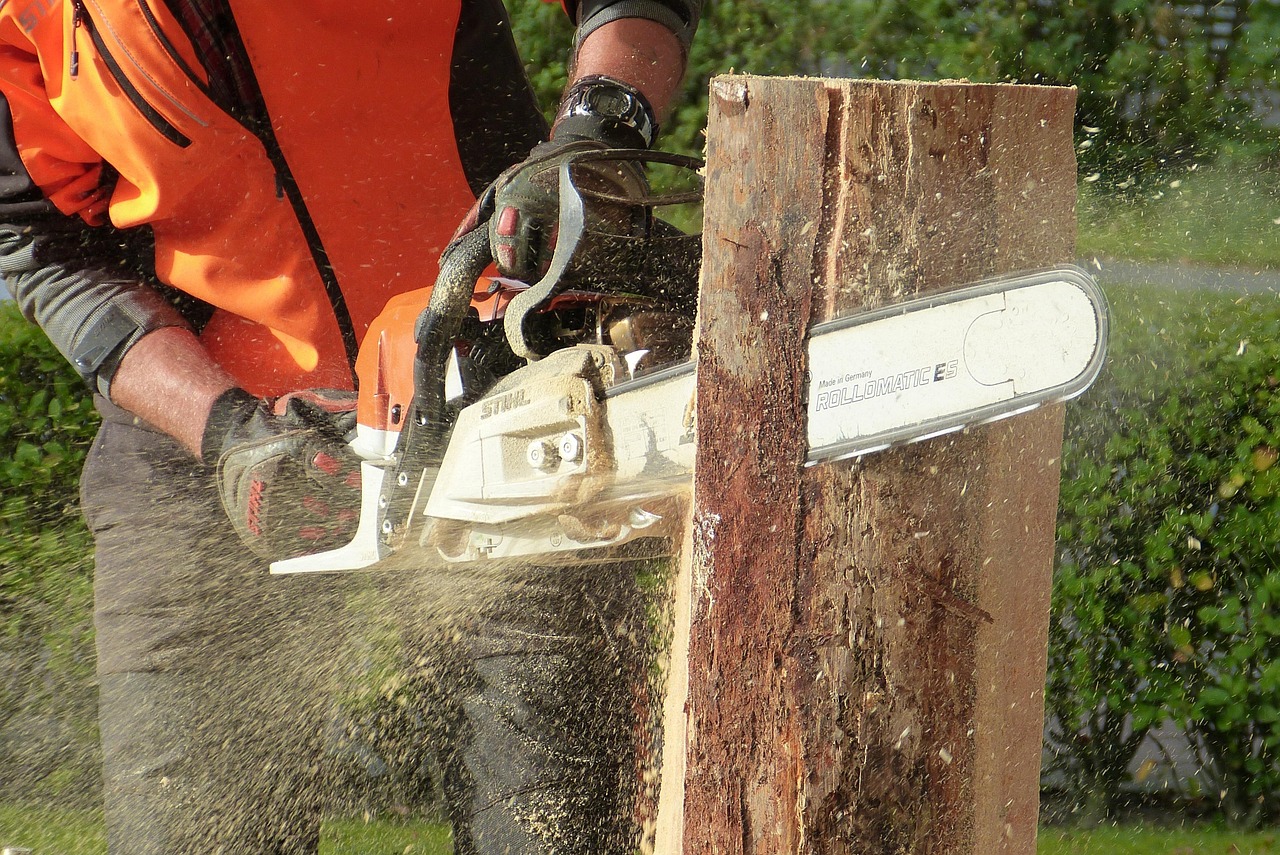Pruning lemon trees is crucial for boosting flowering and fruit production. By removing dead or overcrowded branches, you enhance air circulation and sunlight penetration, leading to healthier growth. Proper pruning techniques and timing is essential in encouraging abundant blooms, which translate into improved fruit yields, making it a vital practice for gardeners.
Lemon trees are popular for their fragrant blossoms and delicious fruit. Pruning is a vital practice that not only maintains the tree’s shape but also promotes better flowering. Healthy flowering is crucial for fruit set, and with the right techniques, gardeners can significantly enhance the blooming potential of their lemon trees.

Pruning lemon trees involves carefully cutting back branches to encourage growth and remove any unhealthy parts. This practice not only improves the appearance of the tree but also increases its overall health. Proper pruning allows the tree to focus its energy on producing flowers and fruit rather than sustaining weak or unnecessary growth.
Understanding Lemon Tree Growth
Lemon trees thrive in warm climates and require specific conditions to flourish. They typically grow best in full sunlight and well-drained soil. Understanding how these trees grow can help you make informed decisions about when and how to prune them.
There are several factors that influence the growth and flowering of lemon trees. These include:

- Age of the tree: Younger trees may require different pruning techniques compared to mature ones.
- Type of lemon: Different varieties may have specific growth habits.
- Climate: Temperature and humidity can affect growth patterns significantly.
By focusing on these factors, you can tailor your pruning strategy to meet the needs of your lemon tree. This personalized approach can lead to healthier trees and more vibrant flowers.
When to Prune Lemon Trees
The timing of pruning is critical to the health of your lemon tree. Generally, the best time to prune is just before the growing season begins, typically in late winter or early spring. This timing allows the tree to heal quickly and take advantage of the upcoming growing season.
Pruning during dormancy helps minimize stress on the tree. However, light pruning can be done throughout the year to remove any dead or diseased wood as needed. It is essential to avoid heavy pruning during late summer or fall, as this can hinder flowering and fruit development.

Essential Pruning Techniques
Several techniques can be employed when pruning lemon trees. Each method serves a specific purpose in promoting healthy growth and abundant flowering.
1. Thinning Cuts
Thinning cuts involve removing entire branches back to their point of origin. This technique opens up the tree canopy, allowing light and air to reach inner branches. Thinning helps reduce overcrowding, which is essential for flower production.
2. Heading Cuts
Heading cuts shorten branches without removing them entirely. This method encourages bushier growth by stimulating new shoots closer to the cut. Heading cuts can help shape the tree while promoting a denser flowering display.

3. Cleaning Cuts
Cleaning cuts remove dead, damaged, or diseased wood from the tree. Regularly executing this technique improves overall health and reduces the risk of pests and diseases that can affect flowering.
Tools for Pruning Lemon Trees
Having the right tools is crucial for effective pruning. Here are some essential tools you will need:
- Pruning Shears: Ideal for cutting small branches and shaping the tree.
- Loppers: Useful for thicker branches that require more leverage.
- Saw: A hand saw or pole saw may be needed for larger branches.
- Gloves: Protect your hands while working with sharp tools.
Common Mistakes in Pruning
Even experienced gardeners can make mistakes when pruning lemon trees. Being aware of common pitfalls can help you avoid them:
- Pruning too much at once can shock the tree.
- Ignoring the shape of the tree may lead to uneven growth.
- Pruning at the wrong time can affect flowering negatively.
By understanding these mistakes, you can approach pruning with confidence, ensuring that your lemon tree thrives and produces beautiful flowers each season.
With proper techniques, tools, and timing, you can master the art of lemon tree pruning. The effort put into this essential task will pay off with bountiful blooms and a healthy crop of lemons.
Benefits of Pruning Lemon Trees
Pruning lemon trees offers numerous benefits that extend beyond simply enhancing flowering. Each aspect of pruning contributes to the overall health and productivity of the tree, ensuring that you enjoy a vigorous and fruitful lemon harvest.
- Improved Air Circulation: Pruning allows air to circulate freely within the tree canopy. This helps prevent fungal diseases and promotes a healthier environment for growth.
- Enhanced Sunlight Exposure: By removing crowded branches, more sunlight can reach the inner parts of the tree. Sunlight is crucial for photosynthesis, which supports vigorous growth and flowering.
- Better Fruit Quality: A well-pruned tree tends to produce larger, healthier fruit. With adequate airflow and sunlight, lemons can develop better flavor and texture.
- Increased Yield: Healthy flowering and fruit set directly correlate with the quantity of lemons produced. Pruning encourages more blooms, leading to a higher yield.
- Easier Maintenance: A well-shaped tree is easier to manage. Pruning helps maintain a manageable size and shape, making it easier to care for the tree.
Specific Pruning Techniques for Lemon Trees
To achieve the best results from your pruning efforts, it is essential to employ specific techniques tailored to lemon trees. Understanding these methods can enhance your gardening skills and improve the performance of your trees.
Crown Reduction
Crown reduction is a technique used to lower the height of the tree while maintaining its shape. This method is particularly useful for mature lemon trees that may have grown too tall for effective harvesting.
- Select a few of the tallest branches.
- Cut them back to an outward-facing bud or lateral branch.
- Aim to reduce the height by no more than one-third in a single season.
Structural Pruning
Structural pruning focuses on creating a strong framework for the tree. This technique involves selecting several main branches to form a solid structure while removing any competing branches.
- Identify 3-5 main scaffold branches that will support the tree’s shape.
- Remove any vertical shoots or branches that grow inward toward the center.
- Ensure that the selected branches are evenly spaced around the trunk.
Understanding Blossom Development
To effectively boost flowering through pruning, it’s helpful to understand how blossoms develop on lemon trees. Lemon trees typically flower multiple times throughout the year, depending on their variety and climate conditions.
The flowering process generally involves:
- Initial Bud Formation: Buds begin forming on new growth from previous years’ branches.
- Flowering Stage: Flowers bloom from these buds, usually in clusters.
- Fruit Set: After pollination, flowers develop into fruit, typically within a few weeks.
The timing of pruning can influence this cycle significantly. By pruning to promote new growth before blooming seasons, you can help ensure that your tree has an abundance of healthy flowers.
Pest and Disease Management Through Pruning
Pruning plays a crucial role in managing pests and diseases that can affect lemon trees. A well-maintained tree is less susceptible to various threats, allowing for healthier growth and increased flowering potential.
- Pest Control: Regularly removing dead wood and overcrowded branches reduces hiding spots for pests like aphids and spider mites.
- Disease Prevention: Keeping the tree open allows for better air circulation, which helps prevent fungal infections such as powdery mildew.
- Monitoring Health: Pruning provides an opportunity to inspect your tree closely for signs of disease or pest infestations.
The Role of Fertilization in Flowering
While pruning is essential for boosting flowering, fertilization also plays a significant role in promoting healthy blooms. Nutrient-rich soil supports robust growth and flowering capabilities.
Consider these tips for effective fertilization:
- Use Balanced Fertilizers: Select fertilizers that provide essential nutrients like nitrogen, phosphorus, and potassium.
- Timing Matters: Apply fertilizer in early spring to support new growth and flower formation.
- Avoid Over-Fertilizing: Too much fertilizer can lead to lush foliage at the expense of flowers. Follow package directions carefully.
A combination of proper pruning techniques and thoughtful fertilization practices will pave the way for vibrant blossoms and healthy fruit production. As you continue to care for your lemon trees, integrating these strategies will yield fruitful results in your garden.
Watering Practices for Healthy Growth
Watering is another critical aspect of ensuring that your lemon tree thrives and produces abundant flowers. The right amount of water supports root development, nutrient uptake, and overall tree health.
Watering Frequency
The frequency of watering depends on several factors, including climate, soil type, and the age of the tree. Here are general guidelines:
- Young Trees: Water young trees more frequently, about once a week or every five days, especially in hot weather.
- Mature Trees: Mature lemon trees usually require watering every 10-14 days, depending on rainfall and temperature.
- Soil Moisture Check: Always check soil moisture before watering. If the top inch of soil is dry, it’s time to water.
Watering Techniques
Employing effective watering techniques can improve the health of your lemon tree:
- Deep Watering: Water deeply to encourage roots to grow deeper into the soil. This helps establish a strong root system.
- Avoid Overhead Watering: Use a drip irrigation system or soaker hoses to minimize leaf wetness. Wet leaves can promote fungal diseases.
- Mulching: Apply a layer of mulch around the base of the tree to retain soil moisture and regulate temperature.
Identifying and Managing Common Lemon Tree Pests
Pests can severely affect the health of your lemon tree and its ability to flower. Being proactive about pest management helps maintain healthy growth and maximize flowering potential.
Common Pests
Several pests are particularly problematic for lemon trees:
- Aphids: Small insects that suck sap from new growth, leading to distorted leaves and reduced flowering.
- Spider Mites: Microscopic pests that thrive in dry conditions. They cause yellowing leaves and webbing on branches.
- Scale Insects: These pests appear as small bumps on branches and leaves, sucking sap and weakening the tree.
Pest Management Strategies
Implementing effective pest management strategies can help protect your lemon trees:
- Regular Inspections: Check your trees regularly for signs of pests. Early detection is key to effective management.
- Natural Predators: Encourage beneficial insects like ladybugs and lacewings that feed on aphids and other pests.
- Insecticidal Soap: Use insecticidal soap or neem oil as a natural treatment for infestations. Apply during the cooler parts of the day to avoid harming beneficial insects.
Disease Prevention for Lemon Trees
Diseases can also hinder flowering and fruit production in lemon trees. Understanding common diseases and their prevention is essential for maintaining healthy trees.
Common Diseases
Lemon trees are susceptible to various diseases, including:
- Powdery Mildew: A fungal disease characterized by a white powdery coating on leaves, which can inhibit photosynthesis.
- Citrus Canker: A bacterial disease that causes lesions on leaves, stems, and fruit, leading to premature leaf drop and fruit drop.
- Root Rot: Caused by overwatering or poor drainage, this disease affects the roots and can lead to tree decline.
Disease Management Strategies
Preventative measures can help protect your lemon trees from diseases:
- Proper Watering Techniques: Avoid overwatering and ensure good drainage to prevent root rot.
- Fungal Treatments: Apply fungicides at the first sign of powdery mildew or other fungal infections, following label instructions carefully.
- Cultural Practices: Practice crop rotation and remove any fallen leaves or fruit to reduce disease spread.
The Importance of Seasonal Care
Lemon trees require different care practices throughout the seasons. Understanding these seasonal needs can enhance flowering and overall tree health.
Spring Care
In spring, focus on preparing your tree for new growth:
- Pruning: Conduct necessary pruning to shape the tree and remove any dead or diseased wood.
- Fertilization: Apply a balanced fertilizer to support new growth and flowering.
- Pest Inspection: Monitor for any signs of pests as the weather warms up.
Summer Care
Summer care focuses on maintaining health during the growing season:
- Watering: Ensure consistent watering, especially during hot spells, to prevent stress on the tree.
- Pest Management: Continue monitoring for pests and apply treatments as necessary.
- Mulching: Maintain mulch around the base to conserve moisture and suppress weeds.
Fall Care
As the growing season winds down, prepare your tree for winter:
- Crown Maintenance: Lightly prune any excessive growth while ensuring the tree retains its shape.
- Disease Prevention: Apply fungicides as a preventative measure against winter diseases.
- Pest Control: Inspect for any lingering pests that may have survived the summer treatment.
winter Care
Winter care is essential for preparing lemon trees for dormancy:
- Protection from Frost: If you live in a cooler climate, consider wrapping young trees or moving potted trees indoors during frost events.
- Avoid Fertilizing: Hold off on fertilizing until spring when new growth begins.
- Mild Watering: Water less frequently, allowing the soil to dry out between watering sessions during dormancy.
Caring for lemon trees throughout the seasons will enhance their resilience against pests and diseases while promoting healthy flowering and fruit production. By integrating these practices into your gardening routine, you can create an optimal environment for your lemon trees to thrive.
Advanced Techniques for Pruning Lemon Trees
As you become more experienced in pruning lemon trees, you may want to explore advanced techniques that can further enhance flowering and fruit production. These techniques require a deeper understanding of tree physiology and growth patterns.
Espalier Techniques
Espaliering is the practice of training a tree to grow flat against a wall or trellis. This method maximizes sunlight exposure and saves space while allowing for easier maintenance and harvesting.
- Choose the Right Location: Select a sunny wall or trellis that receives adequate light throughout the day.
- Initial Training: As the tree grows, guide branches along the support structure, tying them into place using soft ties.
- Regular Maintenance: Continue to prune and shape the tree as it grows to maintain its flat shape, focusing on encouraging lateral growth.
Crown Thinning
Crown thinning is a technique that involves selectively removing branches to improve light penetration and air circulation within the tree canopy. This method can lead to healthier growth and more flowers.
- Selective Removal: Identify and remove interior branches that are crossing or crowding one another.
- Aim for Balance: Ensure that the tree maintains a balanced shape after thinning. Avoid removing too many branches from one side.
- Monitor Growth: After thinning, keep an eye on new growth to assess how well the tree is responding.
Soil Management for Optimal Growth
The quality of the soil in which your lemon tree is planted greatly influences its health and flowering potential. Proper soil management practices can enhance nutrient availability and support robust growth.
Soil Testing
Regular soil testing can help you understand the nutrient content and pH level of your soil, which is essential for healthy tree growth.
- Testing Kits: Use home testing kits or send soil samples to a laboratory for comprehensive analysis.
- Adjusting pH: Lemon trees prefer slightly acidic to neutral soil (pH 6.0-7.0). Amend soil based on test results using lime to raise pH or sulfur to lower it.
- Nutrient Supplements: Based on soil test recommendations, add organic matter, compost, or specific fertilizers to address nutrient deficiencies.
Improving Soil Structure
A well-structured soil promotes healthy root development and enhances water retention. Here are ways to improve soil structure:
- Add Organic Matter: Incorporate compost or well-rotted manure into the soil to improve drainage and nutrient content.
- Aeration: Periodically aerate the soil, especially in compacted areas, to allow air and water to penetrate more effectively.
- Cover Crops: Consider planting cover crops during off-seasons to improve soil structure and prevent erosion.
Understanding Environmental Factors
The environment where lemon trees are grown significantly impacts their growth and flowering capabilities. Understanding these factors can help you optimize care for your trees.
Light Requirements
Lemon trees require full sunlight to thrive. Insufficient light can lead to weak growth and fewer flowers.
- Optimal Sun Exposure: Aim for at least 6-8 hours of direct sunlight each day.
- Tree Placement: Position your lemon tree in a spot that avoids shading from buildings or other trees.
Temperature Considerations
Lemon trees prefer warm temperatures but can be sensitive to extreme heat or cold. Understanding temperature requirements is vital for their success.
- Ideal Range: The ideal temperature range for lemon trees is between 70°F to 85°F during the day and no lower than 50°F at night.
- Frost Protection: In colder climates, consider using frost cloths or relocating potted trees indoors during frost events.
Final Thoughts
Caring for lemon trees involves more than just pruning; it requires a holistic approach that includes proper watering, fertilization, pest management, disease prevention, and seasonal care. By integrating these practices into your gardening routine, you can create an optimal environment for your lemon trees to thrive. Advanced techniques like espalier and crown thinning can further enhance flowering and fruit production.
The journey of growing healthy lemon trees is rewarding. As you apply these strategies, you will not only enjoy bountiful blooms but also savor the delicious fruits of your labor. Taking the time to understand your lemon tree’s needs will ensure that you create a thriving ecosystem that yields beautiful flowers and flavorful lemons year after year.
Your dedication to proper care will ultimately result in a flourishing lemon tree that brings joy, beauty, and delicious fruit to your garden. Happy gardening!
